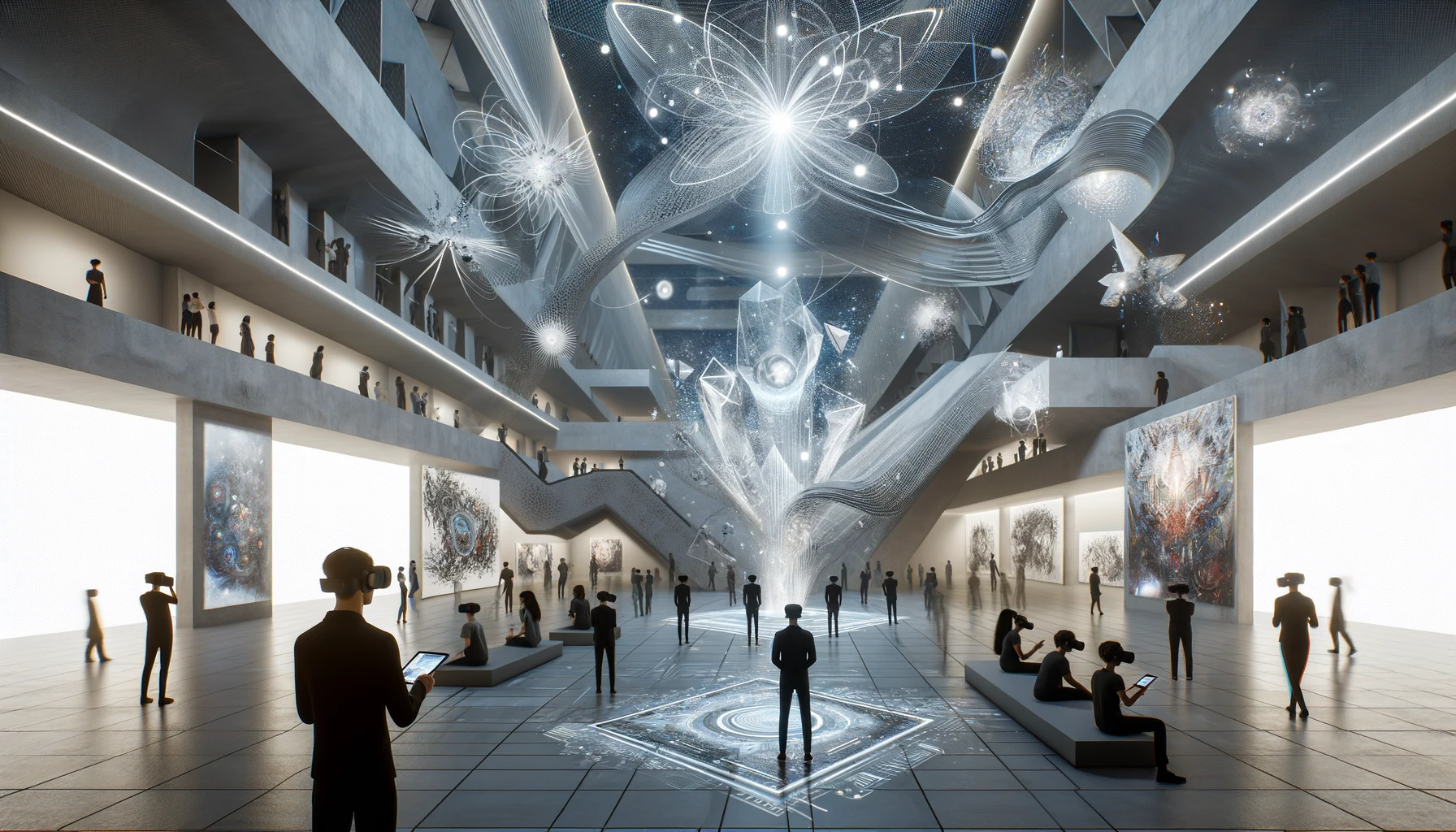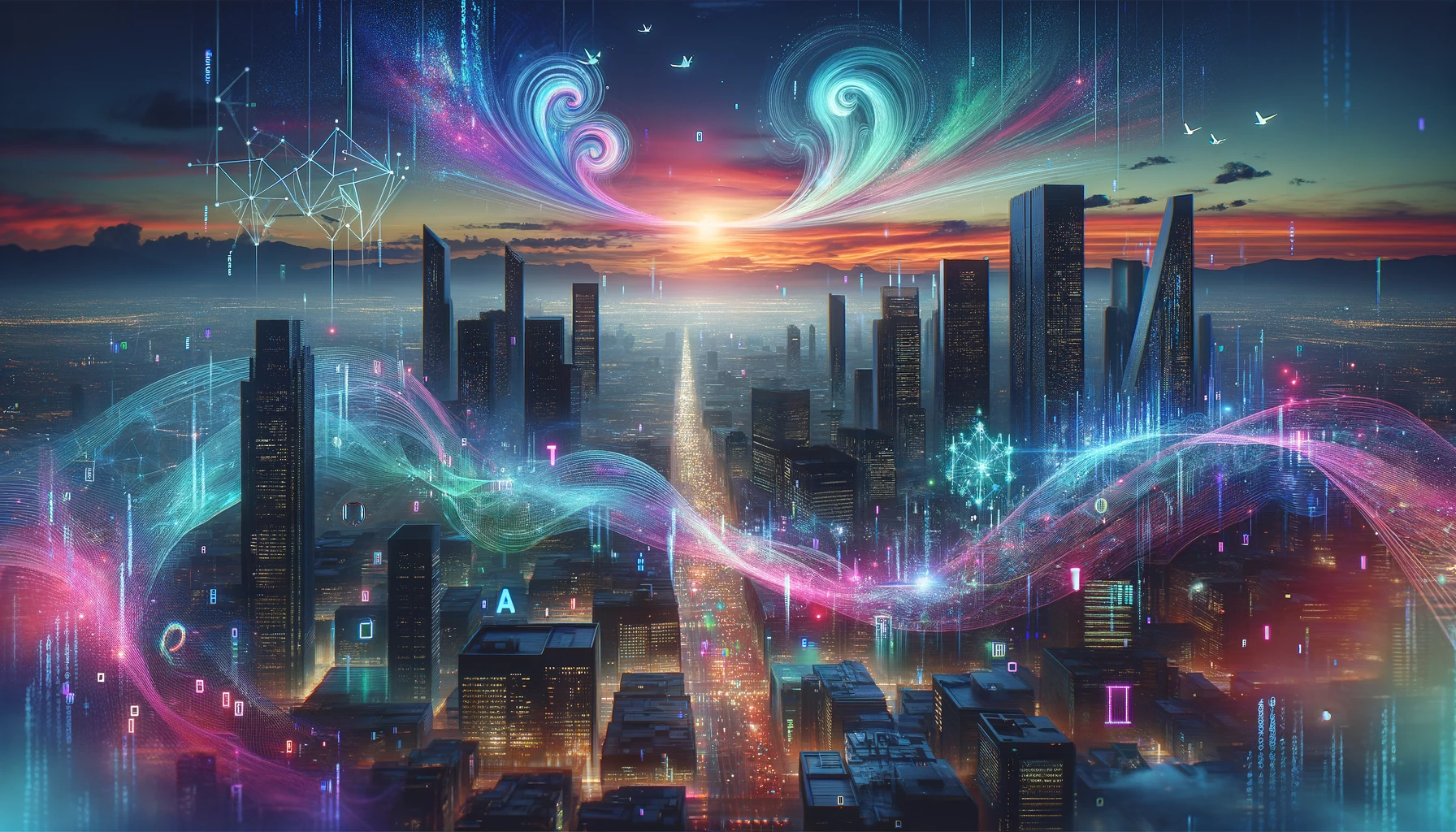Embracing the Wave: How AI Art Generators Are Shaking Up the Creative Scene

Hey there, art aficionados and tech enthusiasts! Have you ever imagined a world where Picasso meets programming, or where Da Vinci dabbles in data? Well, guess what? We’re living in it! The rise of AI art generators,After chat GPT especially the buzzworthy Chat GPT, is flipping the script on the art world, and it’s a roller coaster of innovation, controversy, and everything in between.
Art in the Age of Algorithms
Remember the good old days when creating art meant brushes, palettes, and a whole lot of mess? Fast forward to now, and we’ve got AI stepping into the role of the artist (sort of). With tools like Chat GPT, you can conjure up a masterpiece with nothing but a few keystrokes. Describe a dreamy landscape or a surreal scene, and voilà, the AI brings it to life. It’s like having a magic wand, but instead of “Abracadabra,” you’re saying, “Generate art!”
The Great Leveler
One thing’s for sure: AI art generators are the ultimate levelers. You don’t need to spend years mastering the art of drawing or painting. If you’ve got a vision, AI can help you visualize it. This is fantastic news for creativity, making art more accessible to everyone. But, it also stirs up a storm of questions about skill, effort, and what it means to be an artist.
The Artist’s New Best Friend?
For traditional artists, AI might seem like the new kid on the block trying to steal the show. But here’s a thought: what if AI is more of a sidekick than a rival? Imagine using AI to draft concepts, experiment with styles, or even overcome the dreaded artist’s block. It’s not about replacing the artist but enhancing their capabilities and pushing creative boundaries.
Navigating the Murky Waters of Copyright
Now, let’s tackle the elephant in the room: copyright and ethics. With AI churning out art left and right, who owns it? The person who typed in the prompt? The creators of the AI? And what about the original artists whose styles are being mimicked? It’s a legal and moral maze that we’re all still figuring out.
The Future Is Collaborative
Looking ahead, the fusion of human creativity and AI promises a kaleidoscope of artistic possibilities. We’re talking about a future where artists and AI collaborate, each bringing their unique strengths to the table. It’s not just about creating art; it’s about exploring new realms of creativity that were previously unimaginable.
So, what’s the verdict?
Are AI art generators a threat or a boon to the art world? Well, it’s a bit of both. how we use it and what is our end goal like any other when we use other tools. As we navigate this new era, let’s keep the dialogue open, celebrate the potential, and address the challenges head-on. After all, at the heart of art is expression, and AI is just adding a new verse to our creative story.
The Art of Possibility: AI’s Transformative Role in Creative Expression
In an era where technology intertwines with every aspect of life, the art world stands on the brink of a revolutionary transformation, spearheaded by the advent of Artificial Intelligence (AI) art generators like Chat GPT. These tools are not just reshaping the methods of creation but are also redefining the very essence of artistic expression and accessibility.
The Evolution of Art and Technology
From the rudimentary pigments of prehistoric cave paintings to the sophisticated digital tablets of today, art and technology have always shared a symbiotic relationship. Each technological leap, from the camera obscura to Photoshop, has expanded the artist’s canvas. AI art generators represent the latest frontier, blending the binary with the brushstroke in unprecedented ways.
AI art generators, powered by complex algorithms and neural networks, are capable of producing artwork from textual descriptions, learning from vast datasets of historical art. Chat GPT, with its advanced language understanding, has become a pivotal tool, allowing for nuanced artistic creation that reflects a deep comprehension of human prompts.
AI Art Generators: A Creative Revolution
The diversity of art produced by AI—from surreal landscapes to abstract portraits—illustrates the boundless potential of these tools. By analyzing examples, we see AI not just as a mimic but as a medium, offering new textures, forms, and perspectives previously unimagined.
Accessibility and Democratization of Art
AI art generators are democratizing art creation, enabling individuals without formal training to visualize their ideas. This shift is expanding the art community, making it more inclusive and diverse, and challenging traditional barriers to artistic expression.
The Artist’s Perspective
Many artists embrace AI as a collaborator, using it to explore new creative territories or to enhance their workflow. Interviews or quotes from artists can provide insight into how AI is integrated into their creative process, highlighting a partnership that enhances rather than replaces human creativity.
Ethical and Copyright Considerations
The rise of AI-generated art raises complex questions about originality, copyright, and the essence of creativity. Through discussions and debates within the art community, a new framework for understanding and regulating AI art is emerging, balancing innovation with respect for individual creativity.
The Future of Art in the AI Era
As AI technology evolves, its potential to influence the art world grows, promising new forms of interaction, expression, and understanding. This section can speculate on future trends, such as immersive AI art installations or collaborative projects between humans and AI.
Navigating Challenges and Opportunities
The integration of AI into art is not without its challenges, from technical hurdles to philosophical debates. However, these challenges also present opportunities for growth, learning, and the redefinition of art in the digital age.
The impact of AI art generators like Chat GPT on labor, human work, and the broader creative industry is a multifaceted topic. These technologies are reshaping how artists, designers, and content creators approach their craft, leading to both opportunities and challenges. Here’s an in-depth look at the implications:
Transforming Creative Workflows
AI art generators are becoming tools in the artist’s palette, similar to how Photoshop transformed graphic design. Artists can use Chat GPT to quickly generate visual ideas, rough drafts, or even complex pieces of art, which can significantly speed up the creative process. This allows artists to focus more on conceptualization and less on time-consuming execution.
Accessibility and Democratization of Art
Chat GPT and similar technologies lower the barrier to entry for art creation, making it possible for people without traditional art training to bring their visions to life. This democratization can lead to a more diverse range of voices and ideas in the art world. However, it also raises questions about the devaluation of technical skill and training.
Impact on Employment and Skill Sets
In industries reliant on visual content, such as advertising, media, and entertainment, AI art generators could change employment dynamics. Tasks that once required human labor, such as creating storyboards, concept art, or marketing materials, can now be partially or fully automated, potentially reducing the demand for certain skill sets. On the other hand, there will likely be an increased demand for skills related to operating, understanding, and creatively directing AI technologies.
Ethical and Legal Considerations
The rise of AI-generated art brings up ethical questions about originality, copyright, and the essence of creativity. For instance, when an AI creates art based on a vast dataset of existing works, it’s challenging to attribute authorship and rights. This could lead to legal challenges and debates about the fair compensation and recognition of human artists versus AI-generated content.
New Roles and Collaborations
As AI becomes more integrated into the creative process, new roles may emerge that blend technical and artistic skills, such as AI art directors or AI-human collaborative teams. These roles would focus on guiding the AI to achieve desired outcomes, blending human creativity with AI’s capabilities to produce unique works.
Cultural and Artistic Implications
The widespread use of AI in art creation could influence cultural perceptions of art and creativity. There might be a shift in what is valued in art, with an increased emphasis on the conceptual and narrative elements over the technical execution. This could lead to new art movements and genres that fully embrace AI as a co-creator.
Educational and Training Impacts
Educational institutions and training programs may need to adapt to include AI literacy, teaching students not only traditional art skills but also how to effectively collaborate with AI tools. This could lead to a new generation of artists who are as comfortable with coding and AI as they are with brushes and pencils.
Get benefits from Ai powerGenerated Images :
In summary, Chat GPT and AI art generators are introducing significant shifts in the creative industries, affecting how art is made, who makes it, and the value ascribed to human versus machine-generated content. While these technologies offer exciting possibilities for innovation and inclusivity, they also present challenges that need careful consideration, particularly regarding labor, ethics, and the future of creative professions.
- Conceptual Artwork of Human and Machine Collaboration: This image visualizes the fusion of human creativity and machine precision, showing a human hand and a robotic hand working together on a painting. It represents the collaborative nature of art creation using AI technologies like Chat GPT.
- Infographic on Pros and Cons of AI Art Generators: This infographic outlines the benefits and challenges of AI art generators in the art industry. It provides a balanced view of how these technologies are impacting creativity, accessibility, and traditional art skills.
- Digital Artist’s Workspace: This image depicts a modern artist’s workspace that combines traditional art tools with digital technologies, including a digital drawing tablet and AI-generated art on a computer screen. It highlights the integration of AI into the creative process.
These images complement the discussion on the impact of AI art generators like Chat GPT on labor, human work, and the art industry, illustrating the blend of traditional and digital methods, the debate around AI in creative fields, and the modern creative environment.
Conclusion: A Canvas Without Limits
As we stand at the crossroads of tradition and technology, AI art generators like Chat GPT invite us to reimagine the boundaries of creativity. The future of art, infused with AI, promises a canvas without limits, where the only constraint is the imagination.
Search
Latest Posts
Top 10 Ways 5G Technology Will Transform Everyday Life
Future-Proof Your Workflow: Best SaaS Collaboration Tools 2025
Top Secret Trick to Unblock Any Website or App in 2025
Social Profiles



